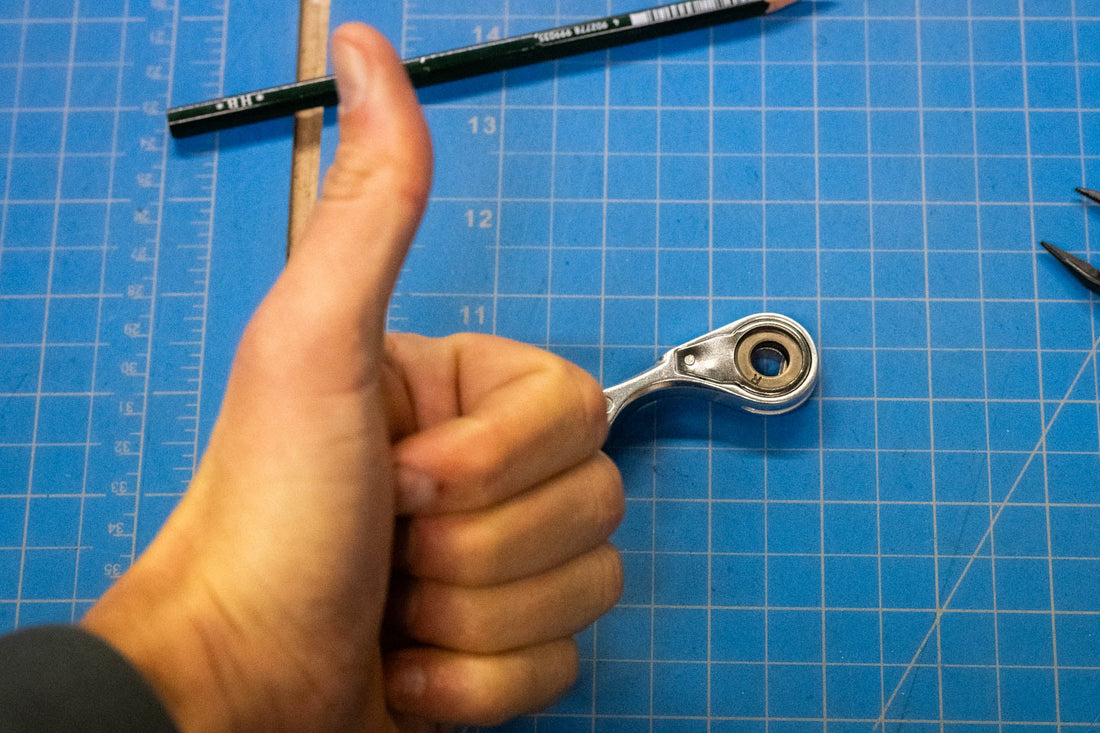
There's really no need to open Silver Shifters up; they don't require maintenance and they're so simple that I can't imagine what could go wrong in there, but people seem to do it anyway, and, at the very least, it's a good way to learn about pawl and ratchet systems. Cup and cone systems are more common, but most cassette hubs and all freewheels have pawls and ratchets and, if you like working on bikes, it's helpful to have some theoretical knowledge of how they work.

Here's everything pulled apart. To reassemble all these pieces have to be dropped in the shifter body from left to right.
If you want to take your shifter all the way apart like this, pry the outer plate off the shifter body with a thin flat head screwdriver. The plate might deform a bit in the process, but it's easy to flatten back out. I pried mine off recklessly and it shows, but you should do it more carefully. Despite the slightly mangled outer plate on this shifter, it still works fine.
Be careful to cover the shifter with your hand while you pry the plate off so the spring doesn't blast out of there.

When you drop this internal plastic washer back in, make sure the lip is facing down.

Now it's almost back together. The O shifters have a ratchet with an R engraved, and the X shifters have an L. Make sure the engraving is face up, otherwise the pawl won't work.
Now onto the trickiest part: getting the spring back into its home to the left of the pawl.

There are undoubtedly slicker ways to do this, but this worked well for me: use tweezers to compress the spring and then, without releasing the tweezers, place the spring in its cavity with the tip of a pencil on top of it. Slowly pull the tweezers out while keeping the pencil tip on top of the spring.

OK, it's in there! The spring pushes the pawl against the teeth, but allows it to bounce out of the way as you shift. Each tiny tooth on the ratchet corresponds to a click as you pull the shifter upwards.
All that's left to do is press the outer plate back on.

You can tap it back on with a mallet, or put it in a vice and press it back into place. Boom, good as... well, I guess it's not "good as new", but it's not bad.
This shifter is something anybody can open, look at for a while, and figure out how it works. Imagine popping open a SRAM AXS eTAP brifter and trying to do the same. Yes, I know they work flawlessly while the battery is still alive, and if it's not too cold out, and before their planned obsolescence date, but I enjoy knowing, at least a little bit, how the components on my bikes work. I'd feel instantly defeated to open up a shifter and see a circuit board. I'm a lit major college dropout, for god's sake, not an engineer.


